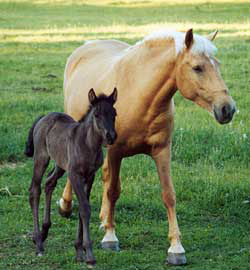Estonian Native
N/A
Fri, 15th November, 2024 - 6:24 am GMT
Sponsor Ads:

Alternative Name
N/ABasic Info
The modern Estonian is not large in size; the head is well proportioned, has a wide forehead and is sometimes somewhat coarse; the neck is on the short side or medium in length and fleshy; the withers are low and wide; the loin is well muscled; the croup is average in length and has a normal slope. The chest is very wide and deep; the legs are short, properly set and distinguished by firmness and cleanness. The hoofs are extremely solid. The animal is undemanding; it has extraordinary endurance and quite good action. The fodder utilization is good. It has a willing disposition. The average measurement (in cm) are: stallions - height at withers 142, oblique body length 147, chest girth 178, cannon bone girth 19.5; mares: 141, 149, 182 and 19 respectively. The predominant colours are chestnut, bay, light bay, dun and grey.
Health
N/AHabitat
N/ABehavior
With the development of agriculture and the demand for working horses these native horses were crossbred with light harness and saddle breeds.Origin
RussiaHistory
The Estonian Native originated from Russia through Novgorod in the 14th and 15th centuries. This horse has maintained many of its native characteristics and had not been notably influenced by any other breeds. The Estonian Native, however has been used in the influence of many other breeds development. The Estonian influenced Vyatka, Obva (extinct), Hackney, Tori, and Ardennes breeds. A stud was opened and used to continue pure breeding and the results were very good with these horses having distinguishable strength and endurance. The demand for the larger horse led to the breed no longer being necessary on the Estonia mainland. The Estonian Native horses numbers were reduced to only about 1,000 horses and are found only on the islands of Muhu, Hiiumaa, and Saaremaa. Estonian Native also known as: Estonian Pony, Mestnaya estonskaya, Estonskaya loshad, Estonian Klepper.Common Foods
grassSponsor Ads:
Nothing comes amiss; so money comes withal. The Taming of the ShrewAct i. Scene 2, William Shakespeare
Estonian Native
Coded by: BGID® | ALL RIGHTS RESERVED Copyright © 2000-2024
Disclaimer | Privacy | Report Errors / Contact | Credits

 Politician, US Vice President and President of the USA - Joseph Robinette Biden Jr.
Politician, US Vice President and President of the USA - Joseph Robinette Biden Jr.  President of the United States of America - Real Estate mogul, Pageant owner and now one of the most controversial men in political history.
President of the United States of America - Real Estate mogul, Pageant owner and now one of the most controversial men in political history.  versus
versus  Russia: 'The Evil Empire'? Are they all that bad or is it just the USA trying to portray Russia as bad because they are a world power with land bigger and a society very different from the USA ideal?
Russia: 'The Evil Empire'? Are they all that bad or is it just the USA trying to portray Russia as bad because they are a world power with land bigger and a society very different from the USA ideal?  Global warming has been in and out as the "latest" hot topic for many years. It is, according to modern scientists, the result of man-made industrial pollutants, clearing forested areas, agriculture, etc. But now they are thinking it started way before the Industrial Revolution...
Global warming has been in and out as the "latest" hot topic for many years. It is, according to modern scientists, the result of man-made industrial pollutants, clearing forested areas, agriculture, etc. But now they are thinking it started way before the Industrial Revolution... 
 Corona virus
Corona virus 
 Users with wide screen monitors can benefit from more content on every page.
Users with wide screen monitors can benefit from more content on every page.